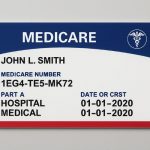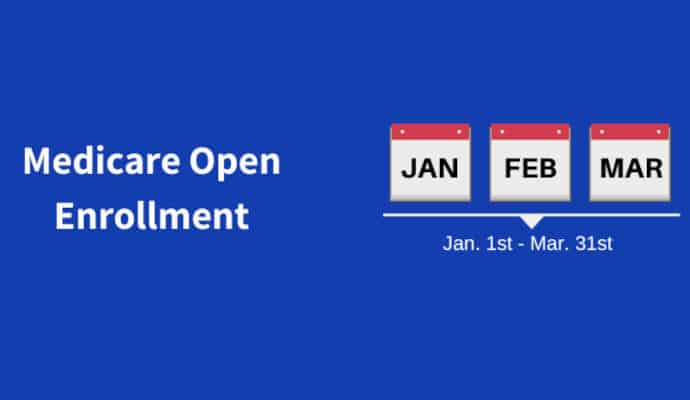
It’s almost time to re-enroll or change Medicare plans for next year. To help you make informed decisions about your older adult’s healthcare coverage, MedicareFAQ reminds us about important deadlines for 2021 coverage, explains 4 essential coverage areas to review, and shares 5 Medicare changes expected in 2021.
Medicare is constantly making changes to its policies, plans, and benefits.
With Medicare’s annual open enrollment period starting on October 15, it’s important to review the changes that could impact seniors’ healthcare coverage and costs in 2021.
Most Medicare beneficiaries have already received their Annual Notice of Change (ANOC) letter in the mail, which outlines any upcoming changes to their coverage.
If your older adult hasn’t received their ANOC yet, contact their plan provider immediately.
Understanding upcoming changes like costs, benefits, changes to service areas, and Part D formulary changes is critical for making informed decisions on whether or not they should stay on their current plan or select a different plan.
Here, we remind you of important 2021 deadlines, explain which 4 coverage areas are essential to review, and share 5 Medicare changes expected in 2021.
Important 2021 dates to mark in your calendar
To avoid missing important deadlines, make note of the key dates that apply to your older adult.
Annual Enrollment Period
From October 15, 2020 to December 7, 2020, beneficiaries can make changes to their current Medicare plan. The changes will go into effect on January 1, 2021.
Five-star Medicare Advantage Policy Enrollment
From December 8, 2020 to November 30, 2021, beneficiaries are allowed to make a one-time change to enroll in a five-star Medicare Advantage plan, Medicare cost plan, or a Medicare prescription drug plan.
Medicare Advantage Plan’s Open Enrollment
From January 1, 2021 to March 31, 2021, beneficiaries can make a one-time change to their Medicare Advantage Plan.
This is only for beneficiaries who are enrolled in a Medicare Advantage Plan.
Medicare General Enrollment Period
From January 1, 2021 to March 31, 2021, the Medicare General Enrollment Period gives seniors a second chance to enroll in Part A and Part B if they didn’t enroll when they were first eligible.
Keep in mind that the coverage won’t become effective until July 1st. So, in the time between their enrollment and July 1st, seniors would have no healthcare coverage.
4 key coverage areas to review during Open Enrollment
The Open Enrollment period can be overwhelming because there’s so much information to review and compare.
To make things more clear, it may help to create a personalized checklist that takes into account your older adult’s specific different healthcare needs.
Whether they’re thinking about making changes or maintaining their current plan, it’s important to look for changes in these 4 key coverage areas.
1. Medications
It’s always possible that medications are placed in new pricing tiers or completely removed from the drug formulary (the list of covered medications).
New rules are requiring some Medicare Advantage prescription drug plans to obtain prior authorization for more expensive brand-name drugs. That can make it more difficult to get them covered by your Medicare plan.
If your medication falls into this category, it is worth exploring other prescription plans for lower copays or better drug coverage.
2. Expected medical costs
Estimating annual medical costs for 2021 can help determine which plan is best for your older adult.
First, make a list of all your older adult’s expected doctor visits and planned procedures for 2021.
This helps you estimate what their full year out-of-pocket costs would be under their current plan and what they would be under any other plans they’re considering for 2021.
Next, add in the monthly premiums for each plan to get an estimate of the total 2021 healthcare costs for each plan under consideration.
3. Vision, dental, and hearing
Currently, Original Medicare doesn’t cover vision, dental, and hearing.
However, there are some Medicare Advantage plans that do.
If your older adult needs these benefits, explore Medicare Advantage plans to find ones that do cover these needs. You could also buy Medigap plans that include these benefits.
4. Travel
If your older adult plans to move before Open Enrollment ends, it might be helpful to wait until they’re settled in their primary residence before enrolling in a plan. This helps avoid issues with the plan’s providers and pharmacies.
People who frequently travel out of state or who live in multiple places, should consider plans with a nationwide network or Original Medicare, which does not have provider networks.
5 Medicare changes expected in 2021
1. Budget reductions
One of the most critical changes to take note of is President Trump’s proposed 2021 budget.
The new budget aims to reduce Medicare spending by approximately $756 billion over the course of the next 10 years.
These budget proposals may not all take effect, but Medicare beneficiaries and family caregivers should keep a close eye on this issue because they could lose access to doctors or services.
And in an effort to reduce Medicare spending, the new budget will now allow beneficiaries to see nurse practitioners or physician’s assistants as their primary care provider.
2. Expected Part B premium costs
Part B premiums for next year haven’t been released yet, but the Centers for Medicare and Medicaid Services (CMS) have reported that we should expect a cost of about $150 per month.
There have also been reports of a potential cap on Part B premium spikes for the upcoming year as result of the pandemic.
3. Increases in Medicare Advantage services and coverage
Telemedicine has been a critical resource during the ongoing coronavirus pandemic and Medicare Advantage policies will reflect that with an increase in telehealth services and coverage.
CMS will also allow beneficiaries of Medicare Advantage plans more flexibility with services in areas such as dermatology, psychiatry, cardiology, primary care, gynecology, and endocrinology.
Plus, as a result of changes made by the 21st Century Cures Act, end-stage renal disease (ESRD) beneficiaries will see an increase in coverage options, allowing them to enroll in plans beginning in 2021.
Finally, it’s expected that there will be expanded coverage for long-term care benefits offered by some Medicare Advantage plans.
This is a significant change. Seniors would have access to day care services, in-home personal care services, and home safety modifications, to name a few.
4. Reduced prescription drug costs
In 2021, beneficiaries diagnosed with diabetes will have a choice of Medicare Part D plans that offer insulin pricing caps and a choice of insulins at $35 copays per prescription per month.
And, it’s estimated that the average basic Part D premium will be $30.50 in 2021, the second lowest average basic Part D premium since 2013.
5. Changes to Star Ratings
Medicare uses a Star Rating System to measure how well Medicare Advantage and Part D plans perform.
Medicare scores how well plans perform in several categories, including quality of care and customer service. Ratings range from one to five stars, with five being the highest and one being the lowest. Plans are rated in each individual category.
Medicare also assigns plans one overall star rating to summarize the plan’s performance as a whole. You can use the overall star rating to compare performance among several different plans.
As a result of the ongoing pandemic and national health crisis, CMS has approved changes for the 2021- and 2022-star ratings. 2021-star ratings will be determined by not only 2020’s scores, but will incorporate 2019’s scores as well.
Recommended for you:
- 2021 Medicare Open Enrollment: Reduce Costs, Improve Coverage
- 2021 Medicare Advantage Plans: The 3 Biggest Changes
- Get Help with Medicare Questions from State Programs
Guest contributor: Lindsay Engle is the Medicare expert for MedicareFAQ. She has been working in the Medicare space since 2017. She is featured in many publications and writes regularly for other expert columns. She has a passion for sharing her expertise on Medicare to beneficiaries so they can be better prepared for healthcare costs after retirement. You can find Lindsay on YouTube where she has a featured channel for Medicare beneficiaries to become educated on all their options.
About the Author
Lindsay Engle is the Medicare expert for MedicareFAQ. She has been working in the Medicare space since 2017. She is featured in many publications and writes regularly for other expert columns. She has a passion for sharing her expertise on Medicare to beneficiaries so they can be better prepared for healthcare costs after retirement. You can find Lindsay on YouTube where she has a featured channel for Medicare beneficiaries to become educated on all their options.












